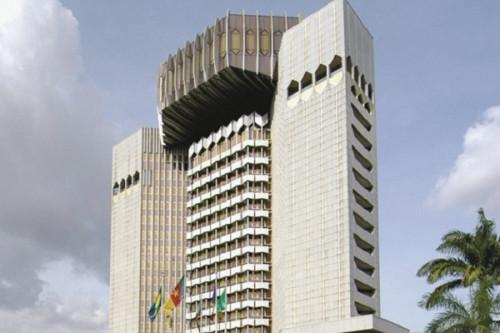Regardless of the endogenous and exogenous causes reflecting a difficult economic situation, the economic situation of the countries of Central Africa recovered timidly in 2018 indicates the Central Bank in its annual report.
By Achille Mbog Pibasso
Despite persistent monetary, financial and security vulnerabilities in certain countries of the sub-region, faced in particular with the terrorist threat, there has been a resumption of activity in the countries of the Economic and Monetary Community of Africa power plant (CEMAC) according to the 2018 annual report published on January 13, 2020.
To illustrate this upturn, the Bank of Central African States (BEAC) emphasizes that real growth fell from 0.6% in 2017 to 1.6% in 2018, the budget deficit fell considerably by 4, 8% of GDP (gross domestic product) to 0.5% of GDP over the same period, and the current account deficit fell from 6.4% of GDP in 2017 to 3.4% of GDP in 2018. By elsewhere, the currency’s external coverage rate improved over the period, increasing from 57.5% at the end of December 2017 to 61.4% at the end of December 2018.
During the period under review, the development of the main CEMAC monetary aggregates was characterized by a significant increase in net claims on governments, an increase in net foreign assets, an expansion in the financing of the economy, and an increase in the money supply induced by all its counterparties. The stock of domestic credit increased by 8.8% compared to its level at the end of December 2017, to stand at 11.468.7 billion FCFA at the end of December 2018.
“Drawing on the lessons of its new environment and of the international and sub-regional economic situation, the BEAC continued to encourage member states to continue efforts aimed on the one hand, at restoring their public finances, in line with the commitments made by the authorities of the Sub-region within the framework of the adjustment programs signed or in negotiation with the IMF, and on the other hand to improve the business climate and to promote investment with the aim of diversifying their economies ”, said BEAC Governor Abass Mahamat Tolli.
To curb the risks weighing on the external stability of its currency, in a context of low inflation and rising oil prices, combined with the increase in the production of hydrocarbons in the Sub-region, the BEAC maintained in 2018, the restrictive stance of its monetary policy in order to continue restoring foreign exchange reserves.
Thus, in the new operational framework of monetary policy in force since June 11, 2018, the meaning and the volume of the weekly intervention of the Central Bank on the money market result from the forecasts of autonomous factors of bank liquidity (FALB) .
The IMF’s shadow
By browsing said annual report, it appears that the net claims of the monetary system on the States stood at 3 364.6 billion FCFA at the end of December 2018, an increase of 616.2 billion FCFA compared to their volume at the end. December 2017. This development is mainly due to the drop in public deposits and disbursements made by the International Monetary Fund (IMF) as part of the economic and financial programs under way in certain CEMAC countries.
Four of the six countries in the sub-region, in this case, Cameroon, Congo, Gabon and Chad have joined the Extended Credit Facility (ECF), so the Central African Republic and Equatorial Guinea are negotiating to be eligible to this funding mechanism.
All in all, the external situation of the CEMAC countries has slightly recovered, materialized by the decline in the current account deficit, including official grants, to – 3.4% of GDP (- FCFA 1,861.5 billion) against – 6.4% in 2017 (3,238.7 billion FCFA °) specifies the Central Bank.
“The improvement thus recorded was the result of a trade balance surplus up 84.5%, to reach 6 915.3 billion FCFA in 2018, linked to the notable increase in exports (+ 27.8%), higher than that of imports (+ 5.1%) ”specifies the document.
Beyond the fluctuations of the market, the overall balance of the balance of payments came out in surplus at CFAF 627.4 billion against a deficit of CFAF 335.3 billion in 2017. This surplus mainly contributed to the replenishment of foreign exchange reserves amounting to CFAF 654.5 billion.
This development is explained by the rise in the price of crude oil, the main export product of the sub-region, allowing CEMAC’s external accounts to benefit from the improvement in the terms of trade.



